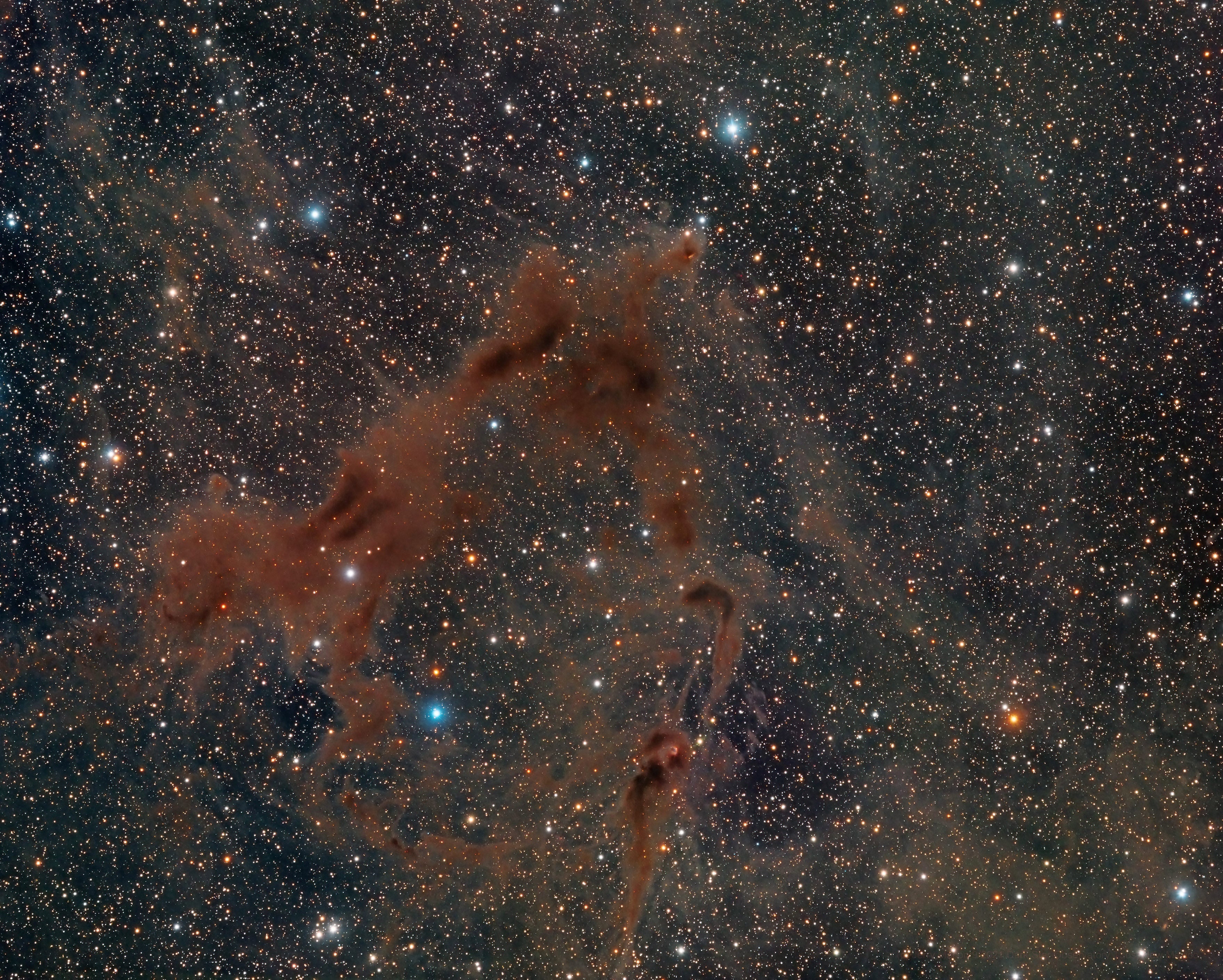
This cosmic object is named after Armenian astronomer Armen Gyulbudaghian (pronounced gyool-boo-DAH-ghee-an), who discovered it in 1977. Gyulbudaghian’s Nebula is one of only a few interstellar clouds that change in appearance in a matter of a few months or years, so-called variable nebulae.
Gyulbudaghian’s Nebula is classified as HH 215, a Herbig-Haro object. Herbig-Haro objects are patches of nebulosity around newborn stars. In the case of Gyulbudaghian’s Nebula, that star is known as PV Cephei. PV Cep is a young, pre-main sequence star surrounded by a rotating accretion disk of material. As the star spins, it ejects two high-speed jets of partially ionized gas along its rotational axis. These beams slam into surrounding clouds of gas and dust.
PV Cep’s rotational axis is tilted slightly toward Earth, which means that the varying fan-shaped nebula that we see is due to a partial clearing in the surrounding dust clouds by the energy beam on the north side of the star. The south jet is obscured by dark nebulosity.
The discovery images taken in 1977 showed that PV Cep had brightened to illuminate the fan-shaped reflection nebula just to its northeast. Later observations show that both the star and nebula may dim or even disappear entirely due to variations in the star as well as intervening dust. At other times, the nebula has been glimpsed in amateur telescopes as small as 10 inches in aperture.









